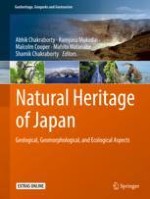This volume brings together the geological, geomorphological and ecological aspects of Japan’s natural heritage, arguing for dynamic conservation of such heritage and explaining their key characteristics in an accessible format for general readers. Sites from World Heritage Properties (Natural), UNESCO Global Geoparks, and National Parks of Japan representing key facets of this heritage are analyzed in depth, and the text is supplemented with color photographs and useful information for potential travelers. The volume is divided into thematic sections that help understand the diversity of Japan’s natural heritage, with supplementary information on conservation, tourism trends, local culture and lifestyles. In addition, chapters analyzing nature's mechanisms that engender diverse heritage landscapes and conservation/sustainable management schemes make this volume a valuable resource for both general readers and those with more specialized interests.
